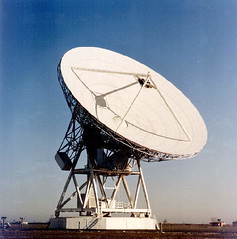Their discussion is a must read for anyone interested in the Fermi Paradox and the potential evolution of advanced intelligent life -- including the possibilities of space travel and the attainment of immortality.





Here's what Frank Drake had to say:
Every discussion of alien intelligence assumes that they will come visit us. But the expense and danger of space travel are formidable. A strong reason why such enterprises are not carried out may be that radio communication works so much better, is far cheaper, and you get your answers at the speed of light.Read the entire discussion.
Any reasonable transport of creatures across space calls for travel speeds that are a substantial fraction of the speed of light, otherwise it takes too long to go even to the nearest stars. But this exposes the spacecraft to serious hazards. Probably the most serious is the potential for collision with debris -- and we are learning that space is full of debris. At relativistic speeds, even a collision with a particle of a few grams results in something close in energy to a nuclear bomb blast. Not good news for the space travelers.
Also the energy requirements are ridiculous, at least to us. To send a spacecraft the size of a small airliner at one-tenth the speed of light requires as much energy as the US now produces in more than a hundred years. And that just gets you someplace - it doesn't provide for a landing or a return home. To put it another way, it takes 10 million times as much energy to move a small space colony to another star as it takes to establish the same colony in the home system. And there is plenty of room at home. It is easily calculated that the energy of the sun is enough to sustain more than ten thousand billion billion humans. That seems like enough. Why go to the great expense and danger of going to other stars? Truly intelligent life would laugh at the idea. The only ones who might try are the dumb ones, and they don't know how.
Tags: Fermi Paradox, Life on Other Planets, Astrobiology, SETI, astrosociobiology, transhumanism, immortality.


No comments:
Post a Comment